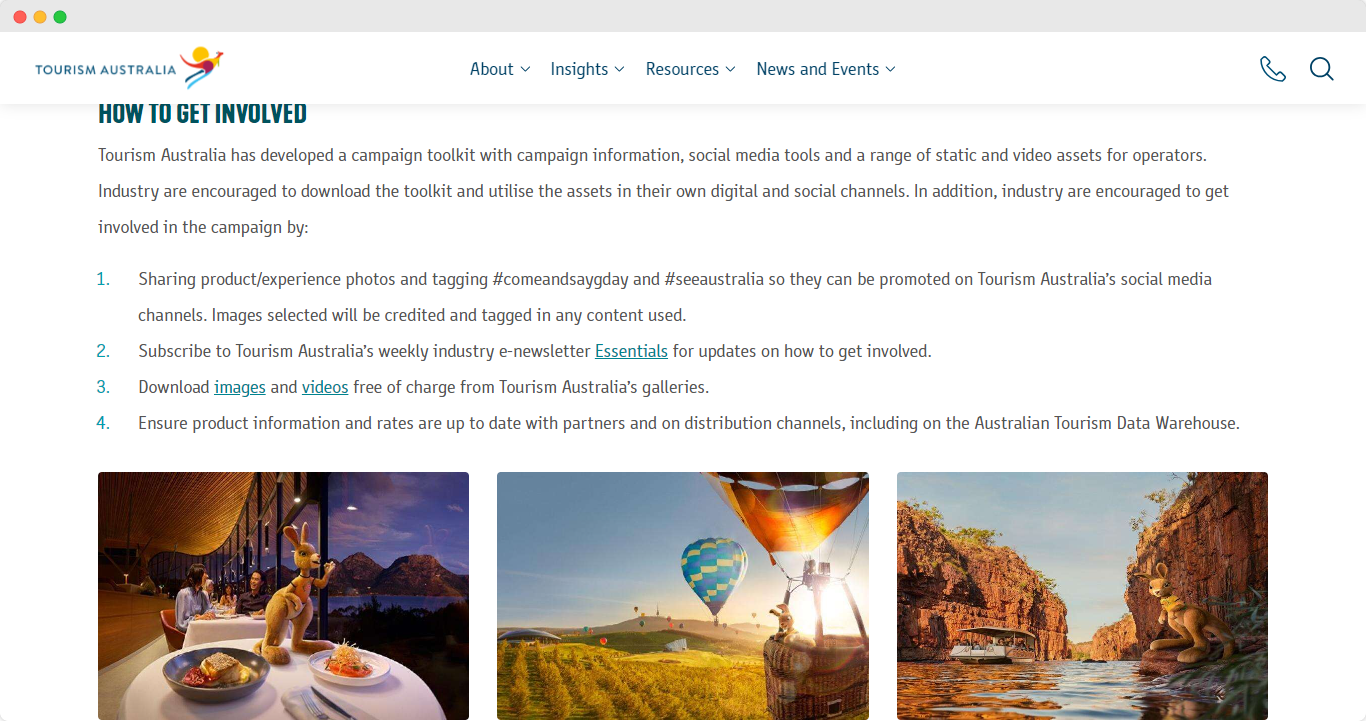Interactive Marketing: Engaging The Digital Consumer
Explore the transformative power of interactive marketing, where personalized strategies meet digital consumer engagement for unparalleled brand experiences.

Every click, scroll, and swipe is met with a barrage of information in the vast expanse of the digital universe. From pop-up ads to promotional emails, from social media notifications to video autoplay – the modern consumer is in a relentless tug-of-war for their attention.
Amidst this digital noise, how can brands ensure their message doesn't just become another drop in the ocean? The answer lies in interactive marketing.
What Is Interactive Marketing?
Interactive marketing is a strategic approach that encourages active participation and engagement from potential customers. Unlike traditional marketing methods that rely on one-way communication, interactive marketing allows for two-way interactions between brands and individuals.
It leverages tools and techniques like interactive videos, user-generated content, personalized experiences, and social media platforms to create meaningful and engaging customer experiences.
With the help of advanced technology and digital marketing channels, interactive marketing aims to foster customer engagement, generate valuable customer feedback, and drive customer actions.
This form of marketing goes beyond static content. It emphasizes creating interactive experiences that captivate and resonate with audiences, leading to increased brand awareness, customer satisfaction, and conversions.
Benefits Of Interactive Marketing
Interactive marketing offers numerous benefits for businesses looking to enhance their marketing strategies and engage with their target audience. By implementing interactive elements, businesses can build trust with potential customers.
Here are the benefits:
- Interactive videos, tools, and campaigns allow for tailored messaging.
- Messaging is directed to specific customer segments.
- Ensures marketing efforts are timely and reach the right audience.
- Increases potential customer conversion rates.
- Aids in building long-term customer relationships.
- Interactive marketing promotes two-way interactions.
- Fosters enhanced customer engagement.
- Incorporation of user-generated content.
- Encouragement of customer feedback.
- Creates a sense of community among customers.
- Customers are motivated to become brand ambassadors.
- Boosts customer loyalty.
- Increases organic reach on social media platforms.
- Differentiates businesses from competitors in the digital space.
- Traditional marketing with static content is becoming less effective.
- Modern customers desire interactive experiences over one-way communication.

Challenges And Solutions To Implementing Interactive Marketing
Implementing interactive marketing can present various challenges for brands. It's important to know what they are and how to overcome them.
Creating Engaging Content
- Solution: Invest in research to understand customer preferences and behaviors.
- How to Overcome: Collaborate with creative teams to brainstorm innovative content ideas. Use data analytics to refine content strategies based on user engagement metrics.
Standing Out in a Crowded Marketplace
- Solution: Embrace advanced technologies and tools that offer unique interactive experiences.
- How to Overcome: Stay updated with the latest digital trends and continuously innovate to offer fresh and unique experiences to users.
Managing User-Generated Content
- Solution: Implement a robust content moderation system.
- How to Overcome: Use automated tools combined with human oversight to filter and review user-generated content. Establish clear guidelines for users to ensure content aligns with brand values.
Maintaining Quality of User-Generated Content
- Solution: Encourage users to follow content guidelines and provide feedback.
- How to Overcome: Offer incentives or recognition for high-quality user contributions. Conduct regular audits to ensure content quality.
Balancing Costs and Investments
- Solution: Prioritize spending based on potential ROI and long-term value.
- How to Overcome: Regularly assess the effectiveness of interactive marketing tools and strategies. Consider cost-effective alternatives or partnerships to reduce expenses.
Training and Expertise
- Solution: Invest in training programs for staff or consider outsourcing specific tasks.
- How to Overcome: Collaborate with experts in the field of interactive marketing. Allocate resources for continuous learning and development to stay ahead in the dynamic digital landscape.
Role Of Technology In Interactive Marketing
In today's world, technology is crucial in interactive marketing strategies. It enables brands to create engaging and immersive experiences for their target audience.
Interactive tools and platforms allow two-way interactions between brands and customers, encouraging deeper engagement and enhancing the overall customer experience.
With advanced technology, brands can personalize their marketing efforts by delivering personalized content and experiences tailored to individual customers' preferences.
Technology empowers brands to leverage various digital marketing channels to effectively reach and connect with their target audience, from interactive videos and content to social media platforms and email marketing campaigns.
By embracing technology in their interactive marketing initiatives, brands can improve their marketing objectives and achieve better customer engagement, conversion rates, and overall marketing ROI.
Benefits Of Technology For Interactive Marketing
Technology is crucial in enhancing the interactive marketing experience and benefits businesses. By leveraging advanced tools and strategies, technology enables businesses to increase customer engagement and drive better results significantly.
One of the key benefits of technology in interactive marketing is the ability to create a personalized and tailored experience for potential customers. Through interactive videos, content, and campaigns, businesses can effectively engage their target audience by offering two-way interactions and user-generated content.
This personalized approach creates a more engaging experience and allows businesses to gather valuable customer feedback and insights.
Furthermore, technology provides businesses various interactive marketing tools to streamline their marketing efforts and optimize their strategies. These tools enable businesses to easily manage and track their marketing campaigns, analyze customer actions, and make data-driven decisions.
Additionally, technology allows for integrating various digital marketing channels, such as email marketing and social media platforms, to reach a larger audience and create a cohesive marketing initiative.
Challenges Associated With Technology-Enabled Interaction
While technology offers numerous benefits in interactive marketing, it also presents several challenges businesses must navigate effectively.
Challenge: Risk of choosing the wrong technology or interactive approach
- Solution: Businesses must carefully assess their needs and objectives to select the most suitable interactive tools and platforms. Implementing the right technology ensures optimal functionality and a superior user experience.
Challenge: Appraising technology capabilities
- Solution: Stay updated with the latest technological developments to ensure platforms offer the necessary features and functionalities. Keeping up with advancements ensures that marketing efforts remain current and effective.
Challenge: Proprietary mindset
- Solution: Avoid relying solely on in-house technology. Embrace collaboration with external partners to access advanced technologies and foster innovation.
Impact of these challenges:
- Choosing the wrong technology can lead to low engagement, reduced customer satisfaction, and ineffective marketing.
- Failing to appraise technology capabilities can result in missed opportunities for enhanced customer experiences.
- A proprietary mindset can limit agility and access to external expertise and resources.
Types Of Content For Interactive Marketing Campaigns
Interactive marketing campaigns utilize various types of content to engage and captivate potential customers. One popular type of content is interactive videos, which allow viewers to actively participate in the video by making choices or interacting with the content in real time.
Another type of content commonly used in interactive marketing campaigns is user-generated content, which involves inviting customers to share their own content related to a brand or product.
This not only encourages customer engagement but also helps to build a sense of community. Personalized content is also a key component in interactive marketing, as it tailors the messaging and experience to individual customers, making them feel valued and important.
Videos
Interactive videos are a valuable tool in interactive marketing campaigns as they provide numerous benefits and opportunities for user engagement.
By incorporating interactive elements into videos, marketers can create a personalized experience for their potential customers and significantly increase engagement.
Unlike traditional videos, interactive videos have the advantage of allowing users to control their viewing experience. Users can actively participate in the content by choosing, clicking on hotspots, or engaging with quizzes and surveys.
This level of interactivity enhances the user experience and increases engagement. Users are more likely to pay attention, stay engaged, and retain information when actively involved in the content. This ultimately leads to increased response rates and higher conversion rates.
The Google Trends API helps create effective interactive video campaigns. It provides valuable insights into keyword popularity and search volume for interactive videos.
This data allows marketers to identify trending topics and create content that aligns with current interests and demands. This increases the chances of reaching a larger audience and capturing their attention.
Social Media Posts
Social media posts play a crucial role in interactive marketing campaigns. They offer a variety of opportunities for engaging with potential customers and promoting interactive content.
Here are some different types of social media posts that can be used in interactive marketing campaigns:
- Polls and surveys: These posts allow businesses to gather valuable feedback and insights from their audience. By asking questions and providing multiple-choice options, businesses can encourage user participation and collect data to understand their customers' preferences better.
- Quizzes and contests: These posts increase user engagement and drive brand awareness. Businesses can create interactive quizzes or contests related to their products or industry to entertain and educate their audience. They can incentivize users to participate and share their results by offering incentives or prizes, expanding the campaign's reach.
- Interactive storytelling: Such posts involve interactive elements, like clickable hotspots or branching narratives. By leveraging the storytelling abilities of platforms like Instagram or Facebook, businesses can narrate their brand story engagingly and interactively, increasing user interest and involvement.
- Social media hashtags are another powerful tool to increase the reach and visibility of interactive marketing campaigns. Hashtags act as a labeling system that connects related content and allows users to discover specific topics or themes. When businesses include relevant hashtags in their social media posts, they increase the chances of their content being discovered by interested users. Additionally, hashtags enable businesses to track the performance and engagement of their campaigns, as they can monitor the usage and engagement of specific hashtags associated with their content.
Several successful interactive marketing campaigns have effectively utilized social media posts. One notable example is the "Share A Coke" campaign by Coca-Cola.
This campaign invited customers to personalize their Coke bottles with their names or share them with friends.
Through social media posts, Coca-Cola encouraged customers to share photos of themselves with their customized bottles using the hashtag #ShareACoke. This campaign generated a massive online buzz and created a sense of personal connection among customers.
Another remarkable example is the "Ice Bucket Challenge" campaign, which raised awareness and funds for amyotrophic lateral sclerosis (ALS). Participants would pour a bucket of ice water over themselves, share a video of the experience on social media platforms, and challenge others to do the same.
This interactive social media campaign went viral, spreading awareness about ALS and significantly increasing donations to the ALS Association.
Businesses can effectively reach their target audience, increase brand visibility, and maximize user participation by using different types of posts, leveraging hashtags, and taking inspiration from successful campaigns.
User-Generated Content (UGC)
User-generated content (UGC) plays a crucial role in interactive marketing campaigns, allowing businesses to leverage the creativity and engagement of their audience.
UGC refers to content created and shared by individual customers rather than the brand itself. It can include photos, videos, reviews, testimonials, and social media posts.
One of the key benefits of UGC is its authenticity. Customers trust the opinions and experiences of their peers more than traditional marketing messages.
UGC also leads to higher engagement. When customers can contribute their own content and be part of the brand's story, they are more likely to engage with the campaign. UGC encourages two-way interactions, enabling customers to participate rather than passively consume content actively.
This engagement can drive valuable conversations, strengthen brand loyalty, and extend reach as users share their UGC with their own networks.
One notable example of a successful UGC campaign is Tourism Australia's #SeeAustralia campaign. The campaign encouraged travelers to share their experiences and adventures in Australia by using the hashtag #SeeAustralia on social media.

By showcasing user-generated photos, videos, and stories, Tourism Australia was able to inspire and motivate potential travelers, providing an authentic and immersive view of the destination.
The campaign created a strong sense of community among travelers and significantly boosted engagement on social media platforms.
Businesses can benefit from UGC's authenticity and higher engagement by incorporating user-generated content into their interactive marketing campaigns. UGC strengthens the relationship between the brand and its customers and expands the campaign's reach as users share their experiences with their own networks.
Personalized Content And Experiences
Personalized content and experiences are essential components of a successful interactive marketing campaign. By tailoring content to individual customers, businesses can create a more engaging and relevant experience, increasing customer satisfaction and conversion rates.
Implementing personalized content and experiences allows businesses to connect with their customers more deeply. Advanced technology, such as customer data platforms and machine learning algorithms, can help gather valuable insights about customers' preferences, behaviors, and demographics.
One strategy for implementing personalized content is addressing customers by name in emails and other communication channels. This simple touch creates a sense of familiarity and personal connection, enhancing engagement and building customer loyalty.
Various brands have successfully utilized personalized content and experiences. Netflix, for example, leverages customer data to provide personalized movie and TV show recommendations based on viewing history.
Amazon uses advanced algorithms to offer product recommendations based on customers' previous purchases and browsing behavior.
Utilizing advanced technology and tailoring content to individual customers, businesses can create a more engaging and targeted experience, ultimately driving customer engagement and conversion rates.
Strategies For Implementing An Interactive Marketing Campaign
Interactive marketing campaigns allow companies to engage and communicate meaningfully and interactively with their audience. Companies use several strategies to implement these campaigns and create two-way communication with their audience.
One strategy is the use of interactive videos and content. By creating videos or content that require active participation from the viewer, companies can capture their attention and create a more engaging experience.
For example, interactive storytelling allows viewers to choose their own path or outcome in a story, making the content more immersive and interactive.
Another strategy is the use of user-generated content. By encouraging customers to share their experiences, opinions, and ideas, companies can foster a sense of community and create a more authentic connection with their audience.
This can be done through social media platforms, where customers can post about their experiences and engage with the brand.
Personalized experiences are also a popular strategy in interactive marketing. Companies use customer data to tailor their content and experiences to each individual customer.
For example, Netflix and Amazon create personalized recommendations based on customers' viewing or purchase history.
That's A Wrap!
Interactive marketing is revolutionizing the landscape of brand-consumer interactions. Consumers are more informed and discerning than ever; it's imperative for brands to engage in meaningful two-way communication.
Interactive marketing provides the platform for this dialogue, ensuring that consumers are not just passive recipients of brand messages but active participants in the conversation.
Furthermore, the shift towards interactivity signifies a broader change in marketing dynamics. No longer can brands solely rely on traditional, one-way advertising methods. The emphasis is now on creating immersive experiences that resonate with the consumer's values and aspirations.
Interactive Marketing FAQ's
What is a good example of interactive marketing?
- Infographics
- A stellar blogging strategy
- Puzzle games
- User-generated content
- Gamification
- Augmented reality (AR)
- Social media
- Quizzes and personality tests
Why is interactive marketing effective?
Interactive marketing strategies engage consumers, prompting them to partake in an experience actively. This involvement increases the likelihood that the marketing message will resonate and leave a lasting impression on the consumer.
What is the difference between interactive marketing and digital marketing?
Consequently, interactive marketing is a specialized segment of digital marketing that emphasizes a deeper level of engagement between the brand and the consumer. What sets interactive marketing apart is its reliance on user data and behavior, distinguishing it from the more traditional, static marketing approaches.
Which marketing tool is interactive?
Polls and quizzes consistently rank among the top interactive tools, and it's easy to see why. They not only demand active participation from the audience but also provide instant feedback, enhancing user engagement
What are the 4 main marketing tools?
The four Ps, comprising product, price, place, and promotion, represent a foundational "marketing mix." This mix encompasses marketers' collective strategies and tactics to meet their marketing goals. E. Jerome McCarthy was the first to introduce the concept of the 4 Ps in 1960 formally.

